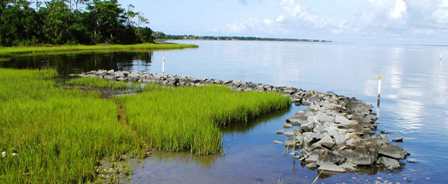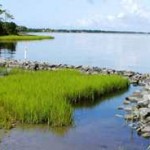 Jared Brumbaugh of the eastern NC NPR affiliate did a great piece and interview with Rachel Gittman (a 5th year PhD student in my lab) about her work on salt marsh conservation and living shorelines. Protecting shorelines with natural, vegetative barriers is not only better for the ecosystem, it’s a more effective means of slowing shoreline erosion. We speak to a local researcher about her work with “living shorelines.”
Jared Brumbaugh of the eastern NC NPR affiliate did a great piece and interview with Rachel Gittman (a 5th year PhD student in my lab) about her work on salt marsh conservation and living shorelines. Protecting shorelines with natural, vegetative barriers is not only better for the ecosystem, it’s a more effective means of slowing shoreline erosion. We speak to a local researcher about her work with “living shorelines.”
A new way of keeping water at bay is taking hold not only in eastern North Carolina but up and down the East Coast and local research is helping spread the word on living shorelines. In high wave action areas, manmade bulkheads make the most sense, but for low to medium wave areas, such as rivers, estuaries, and soundside properties, living shorelines can be more cost effective and better for the environment. Bulkheads are a common sight along waterways in eastern North Carolina. The wood or concrete structures protect the shoreline from erosion and keep water from encroaching on homes and businesses. But bulkheads can have negative impacts to the ecosystem. A more environmentally beneficial way of stabilization is living shorelines, whereby stone, gravel or oyster shell filled bags are placed one on top of the other creating a sill. Read the rest and listen to the interview here.

Leave a Reply